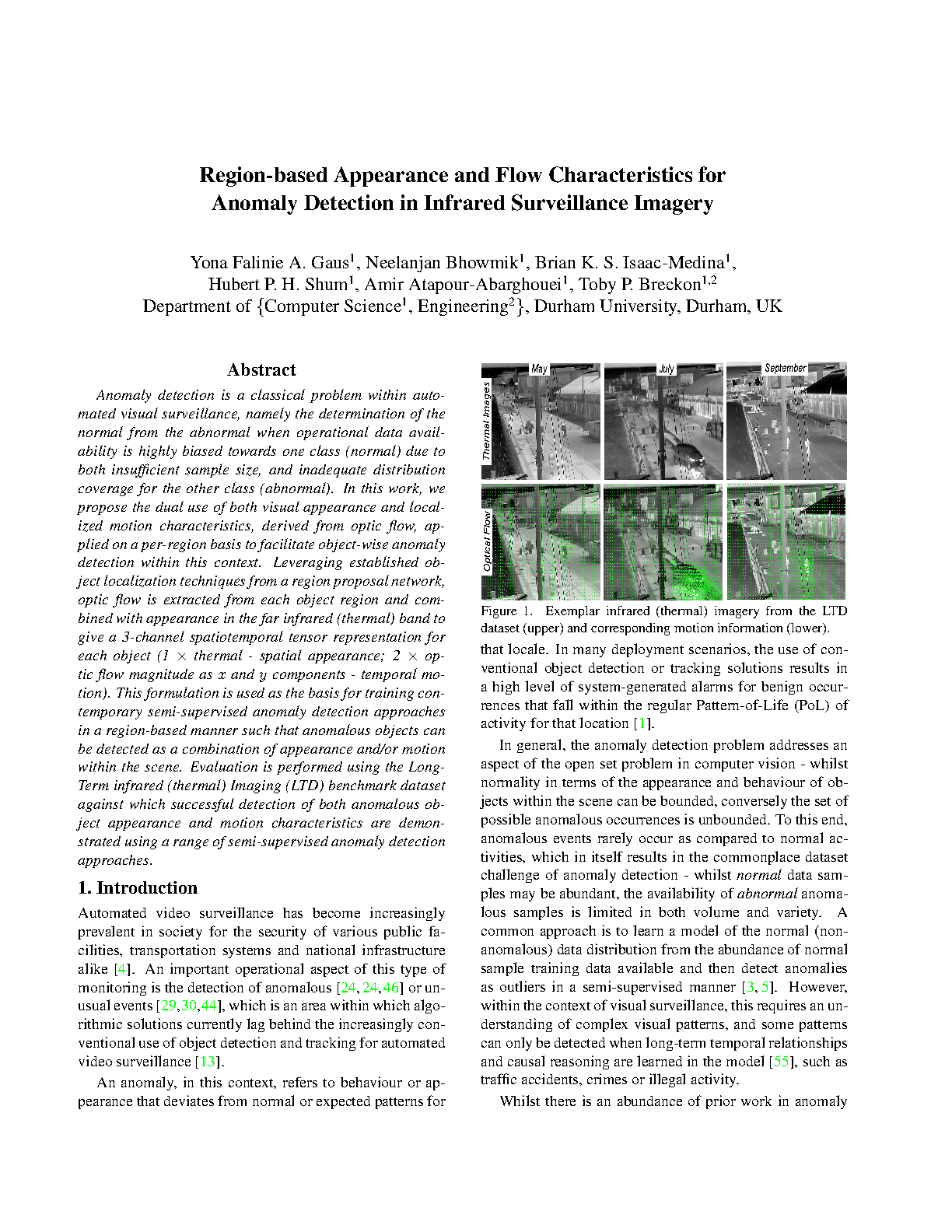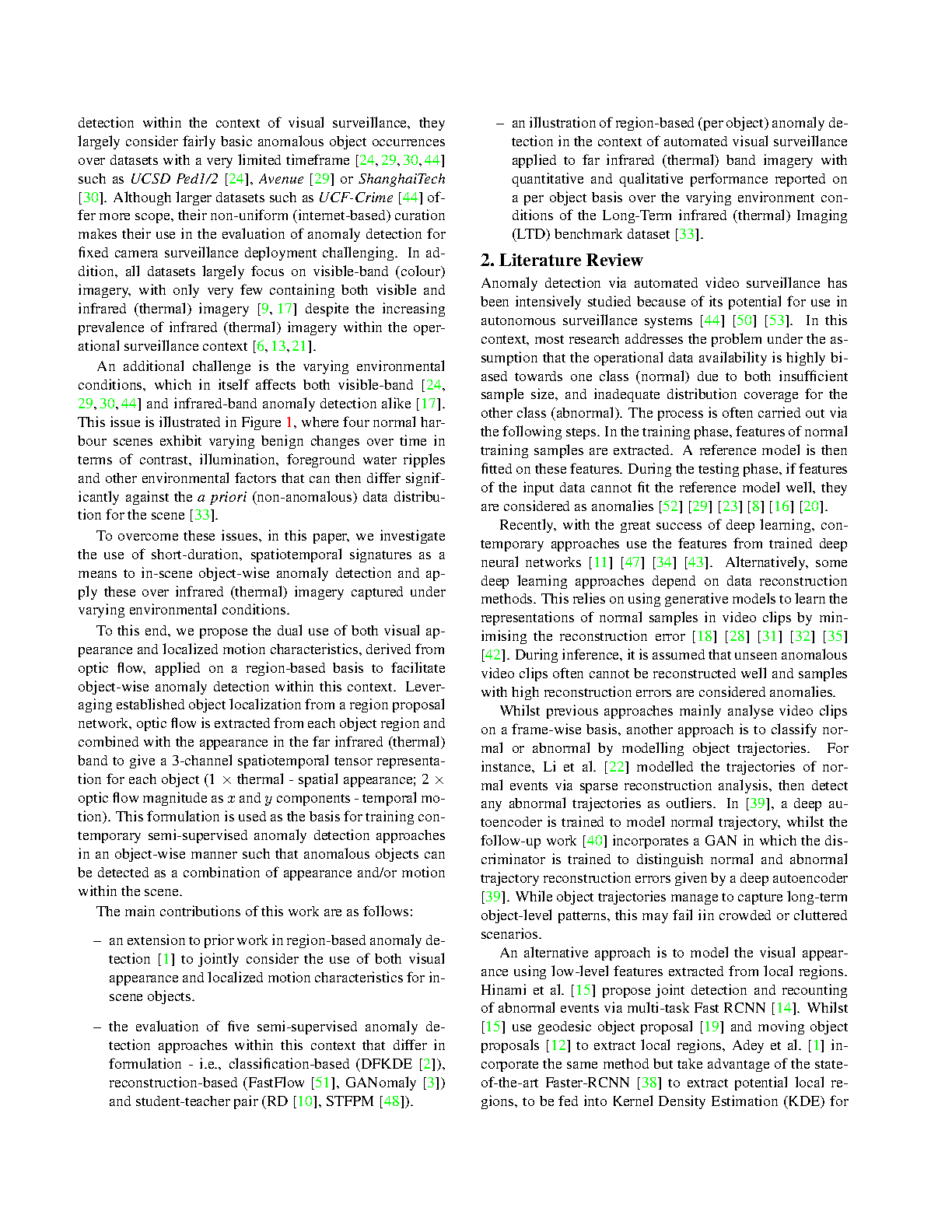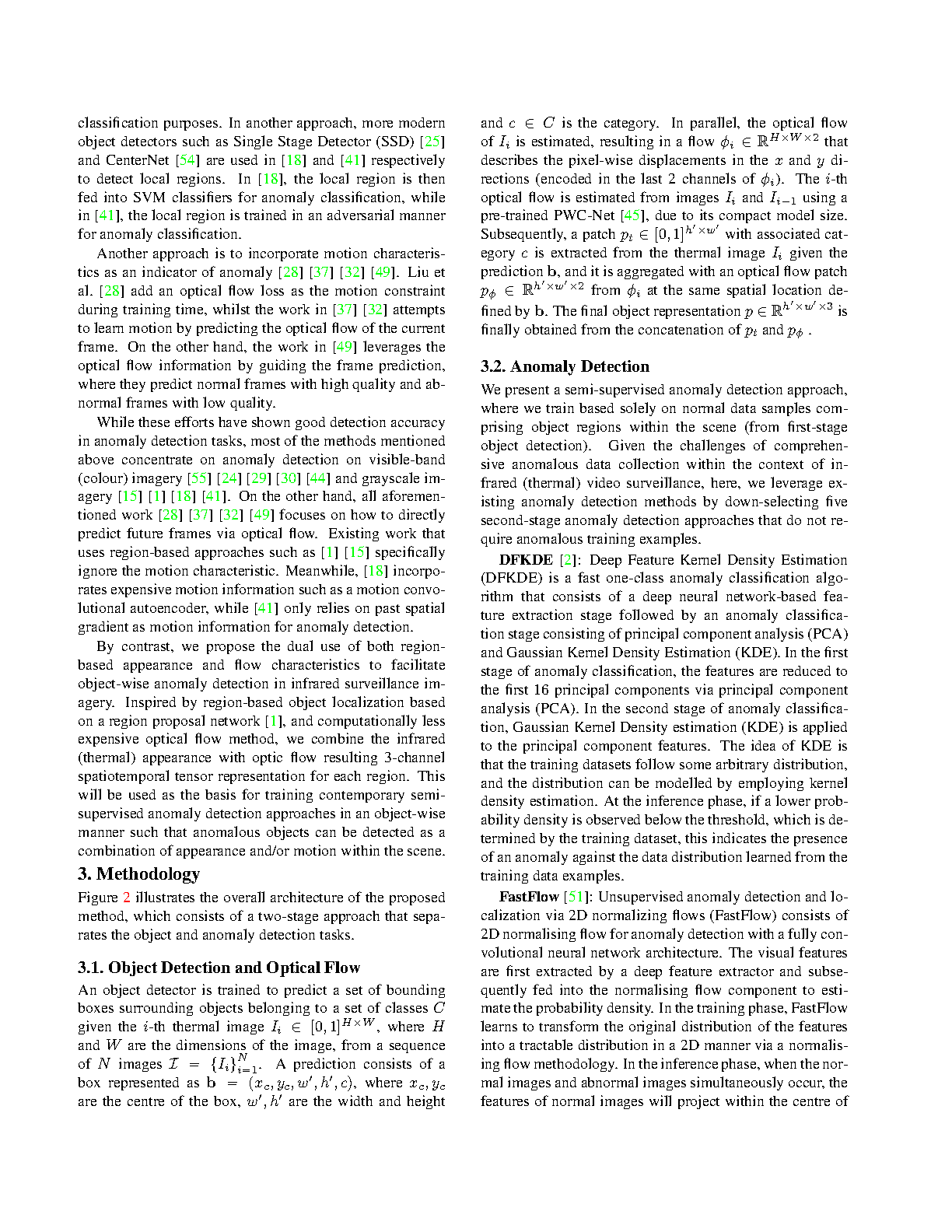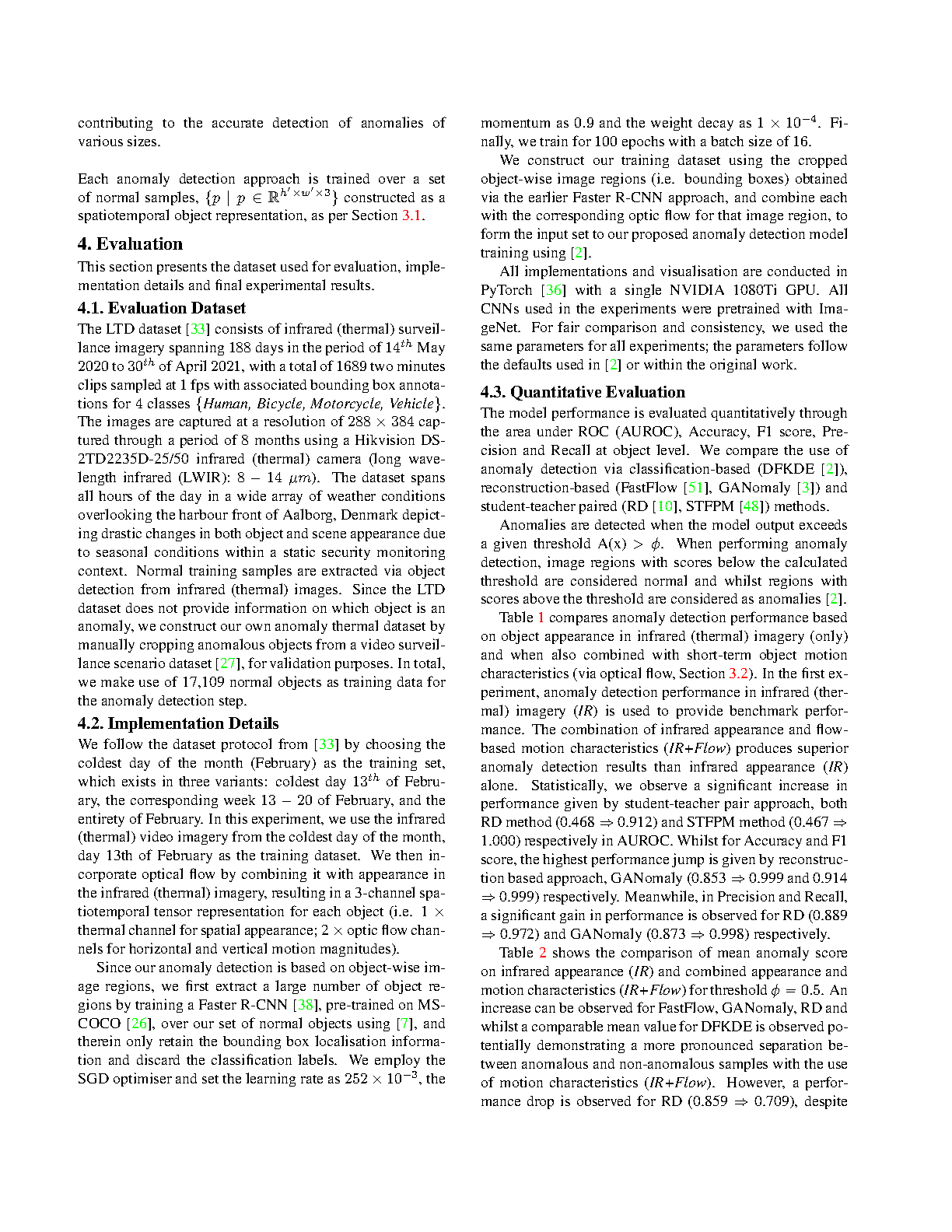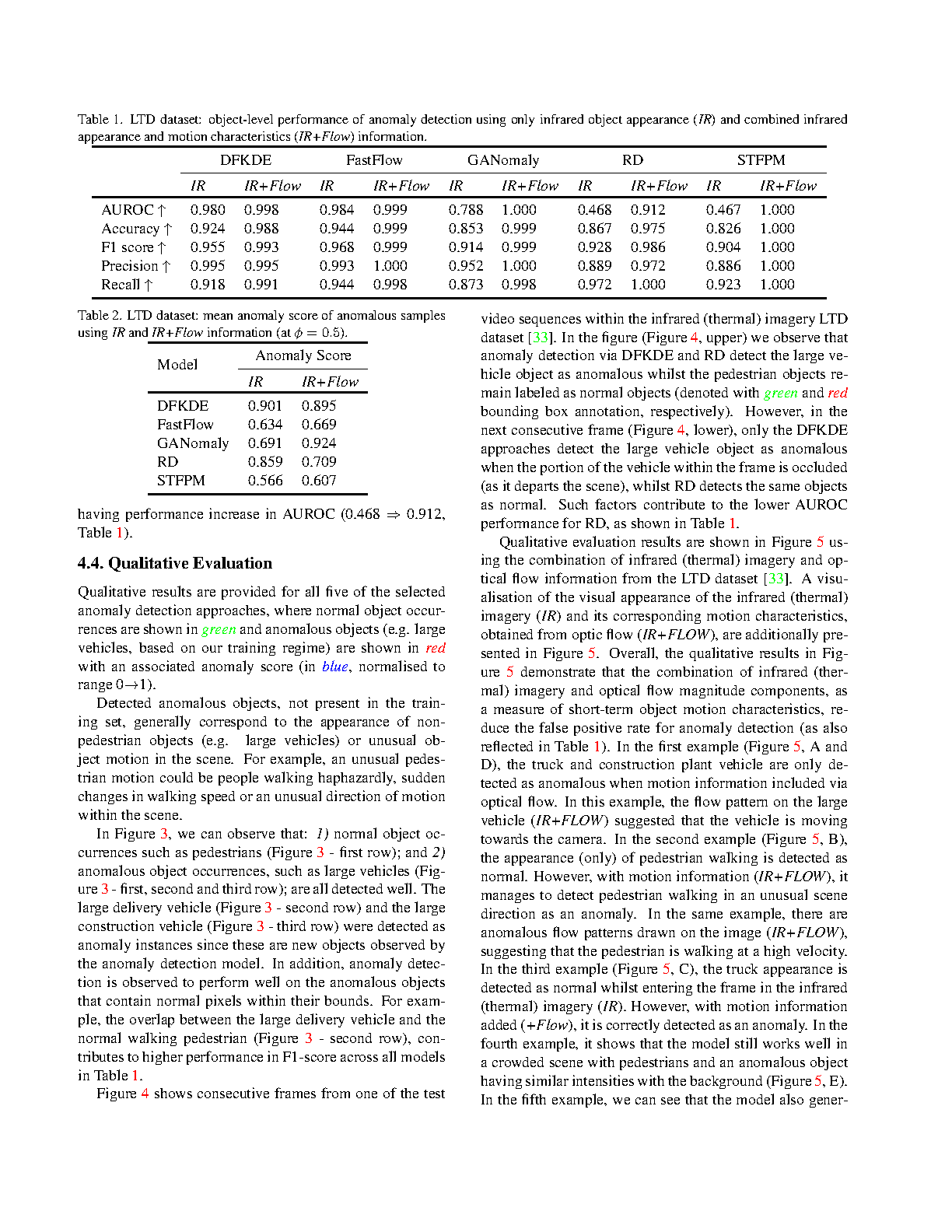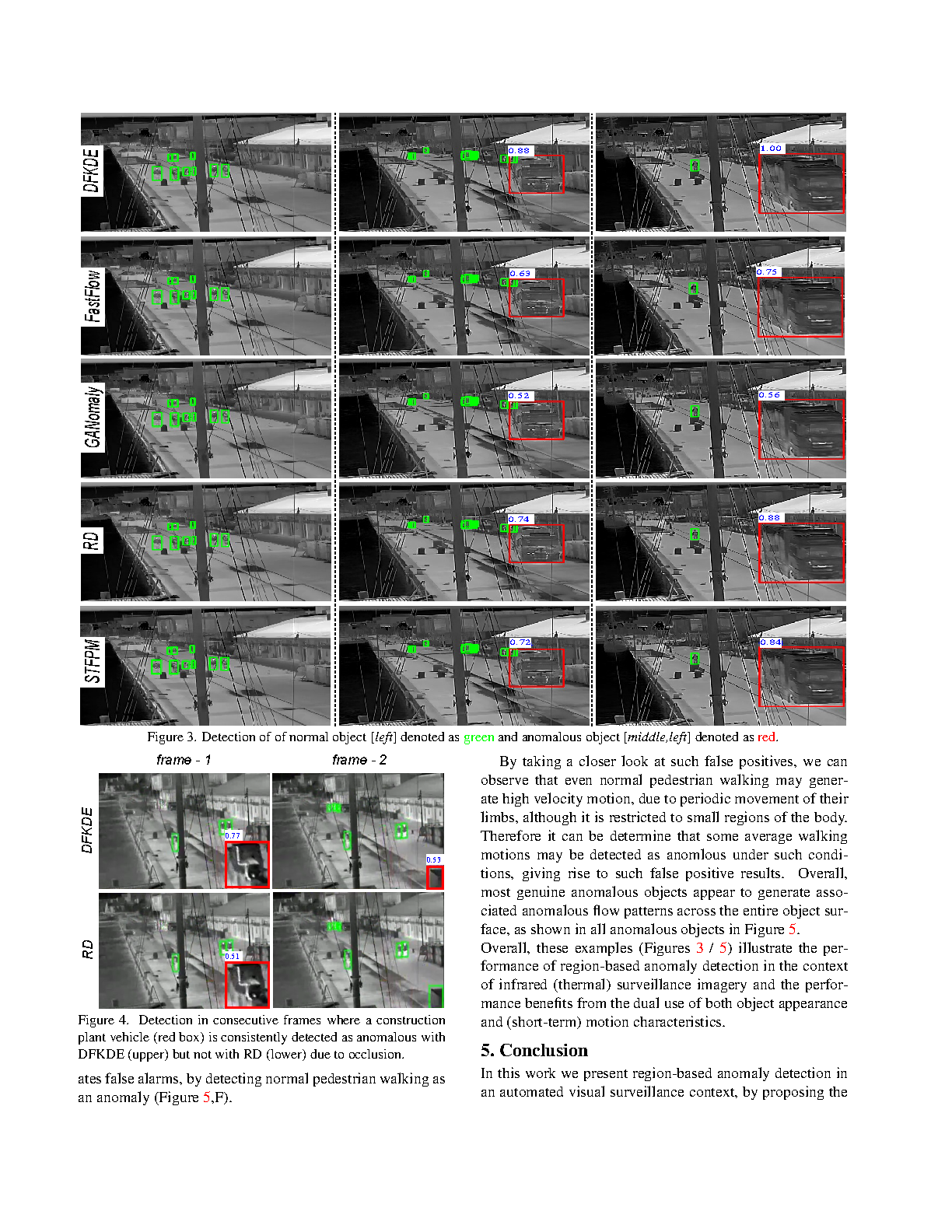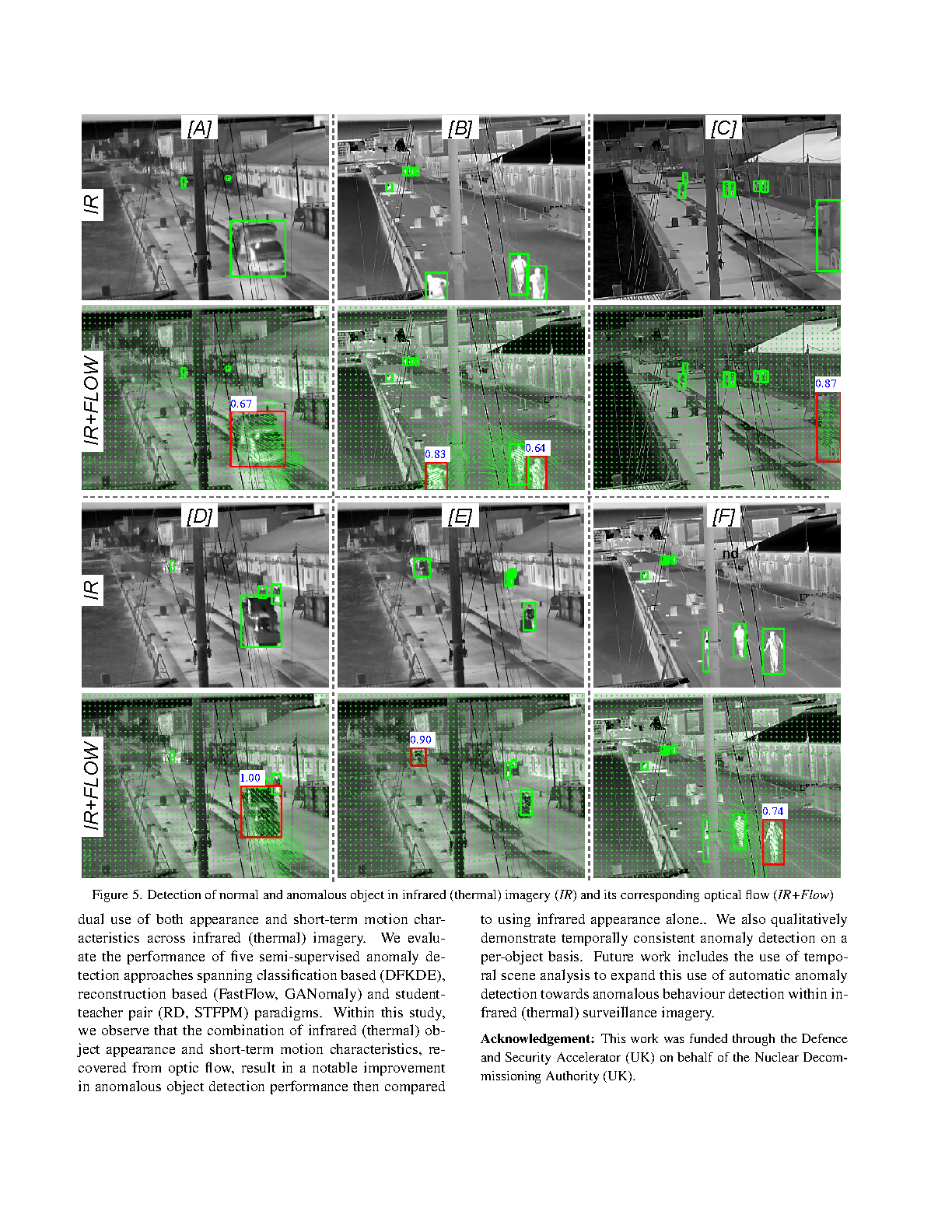Region-Based Appearance and Flow Characteristics for Anomaly Detection in Infrared Surveillance Imagery
Yona Falinie A. Gaus, Neelanjan Bhowmik, Brian K. S. Isaac-Medina, Hubert P. H. Shum, Amir Atapour-Abarghouei and Toby P. Breckon
Proceedings of the 2023 IEEE/CVF Conference on Computer Vision and Pattern Recognition Workshops (CVPRW), 2023

Abstract
Anomaly detection is a classical problem within automated visual surveillance, namely the determination of the normal from the abnormal when operational data availability is highly biased towards one class (normal) due to both insufficient sample size, and inadequate distribution coverage for the other class (abnormal). In this work, we propose the dual use of both visual appearance and localized motion characteristics, derived from optic flow, applied on a per-region basis to facilitate object-wise anomaly detection within this context. Leveraging established object localization techniques from a region proposal network, optic flow is extracted from each object region and combined with appearance in the far infrared (thermal) band to give a 3-channel spatiotemporal tensor representation for each object (1X thermal - spatial appearance; 2X optic flow magnitude as x and y components - temporal motion). This formulation is used as the basis for training contemporary semi-supervised anomaly detection approaches in a region-based manner such that anomalous objects can be detected as a combination of appearance and/or motion within the scene. Evaluation is performed using the Long-Term infrared (thermal) Imaging (LTD) benchmark dataset against which successful detection of both anomalous object appearance and motion characteristics are demonstrated using a range of semi-supervised anomaly detection approaches.
Cite This Research
Supporting Grants
Defence and Security Accelerator (Ref: DSTL0000007030, ACC6031106): £93,978, Co-Investigator (PI: Prof. Toby P. Breckon)
Received from The Ministry of Defence (DASA), UK, 2022-2023
Project Page
